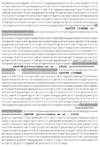Consensus multi-locus sequence typing scheme for Cryptococcus neoformans and Cryptococcus gattii
- PMID: 19462334
- PMCID: PMC2884100
- DOI: 10.1080/13693780902953886
Consensus multi-locus sequence typing scheme for Cryptococcus neoformans and Cryptococcus gattii
Abstract
This communication describes the consensus multi-locus typing scheme established by the Cryptococcal Working Group I (Genotyping of Cryptococcus neoformans and C. gattii) of the International Society for Human and Animal Mycology (ISHAM) using seven unlinked genetic loci for global strain genotyping. These genetic loci include the housekeeping genes CAP59,GPD1, LAC1, PLB1, SOD1, URA5 and the IGS1 region. Allele and sequence type information are accessible at http://www.mlst.net/ .
Conflict of interest statement
Figures


Similar articles
-
Molecular epidemiology reveals genetic diversity amongst isolates of the Cryptococcus neoformans/C. gattii species complex in Thailand.PLoS Negl Trop Dis. 2013 Jul 4;7(7):e2297. doi: 10.1371/journal.pntd.0002297. Print 2013. PLoS Negl Trop Dis. 2013. PMID: 23861989 Free PMC article.
-
Determination of epidemiology of clinically isolated Cryptococcus neoformans strains in Japan by multilocus sequence typing.Jpn J Infect Dis. 2013;66(1):51-5. doi: 10.7883/yoken.66.51. Jpn J Infect Dis. 2013. PMID: 23429086
-
Genotypes and population genetics of cryptococcus neoformans and cryptococcus gattii species complexes in Europe and the mediterranean area.Fungal Genet Biol. 2019 Aug;129:16-29. doi: 10.1016/j.fgb.2019.04.001. Epub 2019 Apr 3. Fungal Genet Biol. 2019. PMID: 30953839 Free PMC article.
-
Recognition of seven species in the Cryptococcus gattii/Cryptococcus neoformans species complex.Fungal Genet Biol. 2015 May;78:16-48. doi: 10.1016/j.fgb.2015.02.009. Epub 2015 Feb 23. Fungal Genet Biol. 2015. PMID: 25721988 Review.
-
Advances in Cryptococcus genomics: insights into the evolution of pathogenesis.Mem Inst Oswaldo Cruz. 2018;113(7):e170473. doi: 10.1590/0074-02760170473. Epub 2018 Feb 19. Mem Inst Oswaldo Cruz. 2018. PMID: 29513784 Free PMC article. Review.
Cited by
-
Molecular epidemiology reveals genetic diversity amongst isolates of the Cryptococcus neoformans/C. gattii species complex in Thailand.PLoS Negl Trop Dis. 2013 Jul 4;7(7):e2297. doi: 10.1371/journal.pntd.0002297. Print 2013. PLoS Negl Trop Dis. 2013. PMID: 23861989 Free PMC article.
-
Environmental isolation of Cryptococcus gattii VGII from indoor dust from typical wooden houses in the deep Amazonas of the Rio Negro basin.PLoS One. 2015 Feb 17;10(2):e0115866. doi: 10.1371/journal.pone.0115866. eCollection 2015. PLoS One. 2015. PMID: 25688971 Free PMC article.
-
MALDI-TOF MS enables the rapid identification of the major molecular types within the Cryptococcus neoformans/C. gattii species complex.PLoS One. 2012;7(5):e37566. doi: 10.1371/journal.pone.0037566. Epub 2012 May 29. PLoS One. 2012. PMID: 22666368 Free PMC article.
-
Global warming impact on the expansion of fundamental niche of Cryptococcus gattii VGI in Europe.Environ Microbiol Rep. 2021 Jun;13(3):375-383. doi: 10.1111/1758-2229.12945. Epub 2021 May 4. Environ Microbiol Rep. 2021. PMID: 33945219 Free PMC article.
-
Whole-Genome Analysis of Cryptococcus gattii, Southeastern United States.Emerg Infect Dis. 2016 Jun;22(6):1098-101. doi: 10.3201/eid2206.151455. Emerg Infect Dis. 2016. PMID: 27191335 Free PMC article.
References
-
- Evans EE. The antigenic composition of Cryptococcus neoformans. I. A serologic classification by means of the capsular and agglutination reactions. J Immunol. 1950;64:423–430. - PubMed
-
- Kwon-Chung KJ. Morphogenesis of Filobasidiella neoformans, the sexual state of Cryptococcus neoformans. Mycologia. 1976;68:821–833. - PubMed
-
- Kwon-Chung KJ. A new species of Filobasidiella, the sexual state of Cryptococcus neoformans B and C serotypes. Mycologia. 1976;68:943–946. - PubMed
-
- Kwon-Chung KJ, Varma A. Do major species concepts support one, two or more species within Cryptococcus neoformans? FEMS Yeast Res. 2006;6:574–587. - PubMed
Publication types
MeSH terms
Substances
Grants and funding
LinkOut - more resources
Full Text Sources
Other Literature Sources
Miscellaneous

